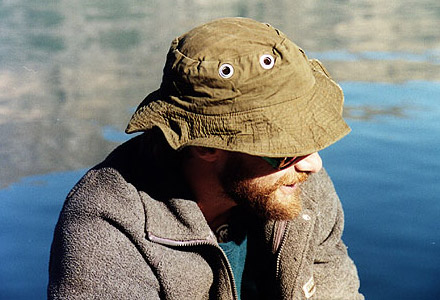
Discuss (Up to OJB's Photo Tips Page) Photography Tips: Field DepthMost photographers are interested in getting the focus "right" but right doesn't always mean everything should be in sharp focus. Cameras can only focus at one distance, so if you are photographing a scene with some depth (almost anything) you need to choose your focus point carefully. Most cameras have an auto-focus system which tries to guess the correct point or has some coarse mechanism for deciding. Often this system will work well but there are situations when the photographer should intervene. Note that many basic cameras don't have a manual focus and this limits their usefulness. The photo at the top of this page is effective for many reasons but one of the main ones is the sharp focus on the subject (the person) without distracting elements in the background. If the water in the background (with its reflections) was in sharp focus it would detract from the foreground. Water is a good neutral background anyway, but unfocused water is even better. How was the effect achieved? First, I focused on the person's face (which was about average distance from the camera to the foreground). Second, I used a wide aperture and a fast shutter speed. Wide apertures produce narrow zones of good focus. For example, at f/4 objects between 1 and 4 meters might be well focused but anything more distant might be de-focused, but at f/22 anything from 1 meter to infinity might be reasonably focused. Because the wide aperture lets more light through I compensated by using a short shutter speed. To make the process above easier you can use an aperture priority program on your camera. This means you set the aperture to get the effect you want (in this case f/4) and the camera compensates by setting the shutter speed. Another option is to use variable programmed mode. On the Canon you can choose a fully automatic mode (the camera sets aperture and shutter) but select one which favours a narrow aperture. Another possibility is to use depth of field mode. On the Canon in this mode you choose two focus points and then take the photo. The camera ensures those two points are in focus. I don't find this mode produces very predictable results so I don't use it. Related Subjects |
| Using field depth to change the appearance of framing objects. | |
| Some more analysis of the photo at the top of this page. |
![[Up]](../XuShared/Up4B.jpeg)
![[Comment]](../XuShared/Comment2B.jpeg)
Comment on this page: Very Useful • Quite Useful • Useless or: View Results |
||||||||||||